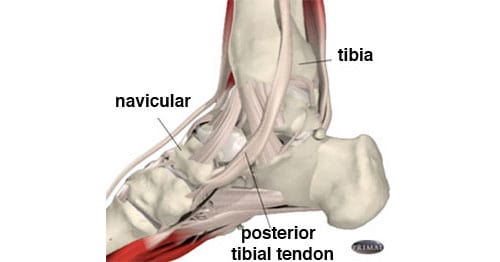
Utilizing Shortfoot (Arch Collapse, pt 2)
In part one of this series, we focused on HOW to create an arch or shortfoot position.
Here’s how you can pattern it into your motor subconscious:
1. Single Leg Balance Sequence
a. look left, right
b. look up, down
c. shift up foot out and close eyes
2. Inversion with Toes Pointed and Flexed
When seated and propping one foot onto the opposite knee, inversion is trying to look at the sole of your foot. You rotate the big toe away from you and the pinky towards.
The two main inverters of the foot are the posterior tibialis tendon, which wraps below the ankle:
 |
| photo credit: hivehealthmedia.com The post tib’s main job is inversion. |
 |
| photo credit: studydroid.com The anterior tib is involved in a mutitude of things. |
That’s the anterior tib.
He comes alive when we pull our toes up and makes inversion much easier.
If you have trouble finding the post tib in plantarflexion (toes pointed), start here.
3. Coordinating Shortfoot with Concentric (or “up”/”work”) Phases of Movement
Lastly, the glutes should contract as your foot contracts. Prime this neurologically by solidifying shortfoot as you return to standing. As much as we’re trying to cement our foundation for stability, the foot also needs to be mobile for shock absorption and agility. Practice both by relaxing it to load (eccentric) and stiffening it to unload (concentric).
You can also use this technique in deadlifts (single leg or otherwise), lateral lunges, step ups etc.
- Shortfoot can be used to stabilize the body from the ground up
- Manipulate the feet and eyes to give variability to balance training
- If you can find and make your posterior tibialis tendon pop out, you’ve probably got inversion right
- Toes up inversion is easier than toes pointed inversion
- Coordinate shortfoot positioning with power phases of a movement to cement co-contraction with the glutes and stabilize the torso
- The most effective stability allows itself to be turned “on” and “off”
- Use these to stimulate, not fatigue (30 – 60s total)




